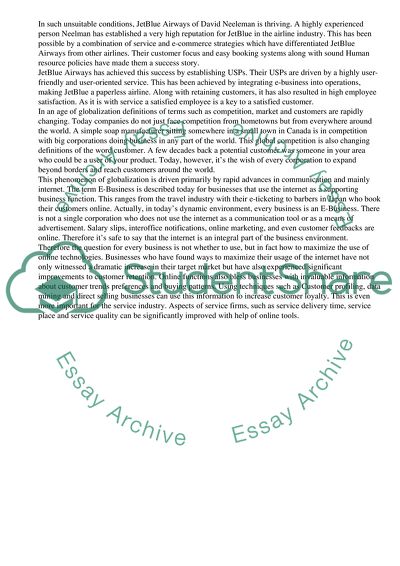Cite this document
(Success Story of JetBlue Airway Coursework Example | Topics and Well Written Essays - 4250 words, n.d.)
Success Story of JetBlue Airway Coursework Example | Topics and Well Written Essays - 4250 words. Retrieved from https://studentshare.org/business/1732121-building-loyalty-through-customer-and-e-business-strategies
Success Story of JetBlue Airway Coursework Example | Topics and Well Written Essays - 4250 words. Retrieved from https://studentshare.org/business/1732121-building-loyalty-through-customer-and-e-business-strategies
(Success Story of JetBlue Airway Coursework Example | Topics and Well Written Essays - 4250 Words)
Success Story of JetBlue Airway Coursework Example | Topics and Well Written Essays - 4250 Words. https://studentshare.org/business/1732121-building-loyalty-through-customer-and-e-business-strategies.
Success Story of JetBlue Airway Coursework Example | Topics and Well Written Essays - 4250 Words. https://studentshare.org/business/1732121-building-loyalty-through-customer-and-e-business-strategies.
“Success Story of JetBlue Airway Coursework Example | Topics and Well Written Essays - 4250 Words”, n.d. https://studentshare.org/business/1732121-building-loyalty-through-customer-and-e-business-strategies.


